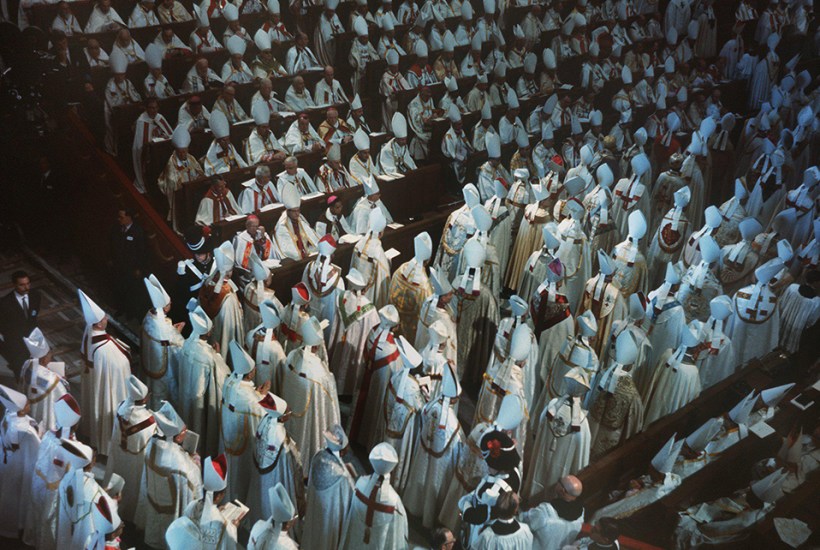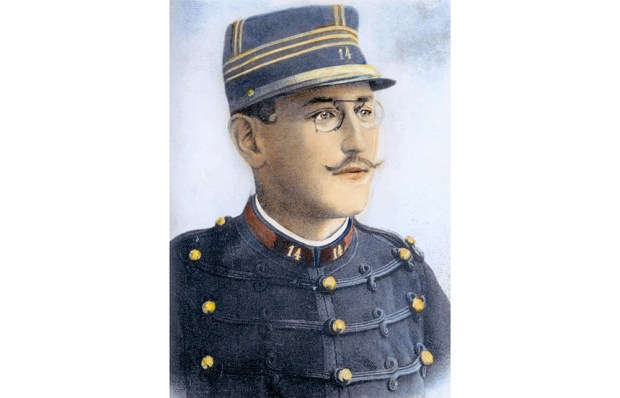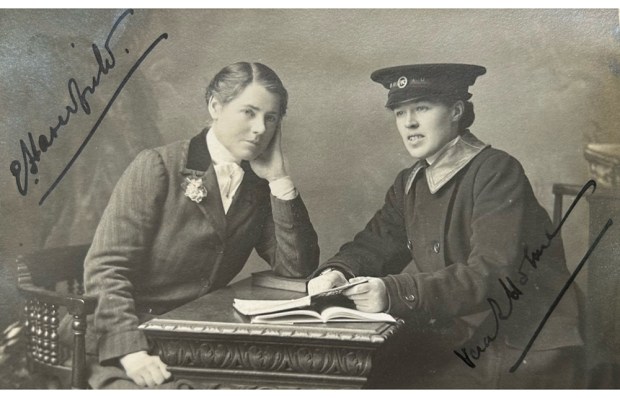People no longer moan about most of the things that bothered them during my childhood. You don’t hear old folk at bus stops ridiculing the ‘new pence’ of decimal currency. Students no longer care about Vietnam. Retired wing commanders have finally stopped writing to the newspapers about the misuse of that fine old English word ‘gay’. But there is one topic that still attracts world-class windbags. It’s worthy of inclusion in the fictional world boring championships described by the Daily Telegraph’s Peter Simple column, right up there with ‘A history of plywood’ and ‘Parking problems in Wolverhampton’. We’re talking about the Second Vatican Council, whose first session was held 60 years ago last month.
To mark the occasion, George Weigel, one of America’s most distinguished Catholic thinkers, has written an analysis of the Council entitled To Sanctify the World. It isn’t dull. Rather, it’s a magisterial response to the bores and fanatics who are still fighting over the meaning of the Council documents – more venomously than ever, now that they can score points on social media.
At one extreme we have a tiny faction of liberals, styling themselves ‘the People of God’, who invoke Vatican II in their attempts to secularise the Catholic Church. They won’t be satisfied until every church has been forced to install a transgender lavatory for guests attending same-sex weddings. Granted, the subject didn’t crop up in the disquisitions of the Council fathers, but it’s in the ‘spirit of Vatican II’.
At the other extreme we have several small factions of traditionalists who dislike the Council with different degrees of vehemence. The craziest of these, who inhabit the border between the official Church and quasi-Catholic sects, are inspired by the conspiracy thinking of the American Right. They’ve always thought the Council was staged by Freemasons. Now the Catholic LGBT+ lobby has persuaded them that they were ‘Homomasons’, funded by George Soros.
Weigel reminds us that left vs right squabbles over the Council broke out as soon as the avuncular and popular but unfortunately dying Pope John XXIII opened the proceedings in 1962. It was immediately presented as a ‘power struggle between open-minded liberals and close-minded conservatives defending a sclerotic status quo’. This inevitably had an effect: ‘How many bishops wanted to find themselves portrayed in the media as mindless reactionaries?’
Even so, says Weigel, history has exaggerated the impact of the left-right taxonomy on the 16 documents produced by the Council. St John XXIII – as he now is – wanted to fill the Church with a spirit of evangelisation. Already his intentions were being clarified by Bishop Karol Wojtyla from Poland, now St John Paul II, who urged Vatican II to ‘rescue the western humanistic project through the bold proclamation of a Christian humanism centred on the person of Jesus Christ’. Meanwhile, Pope John died, and the Council fell into the hands of a pope who, left to himself, wouldn’t have had the imagination to call it: the excruciatingly cautious but profoundly holy St Paul VI.
Weigel concludes that the Council, which ended in 1965, was successful in proposing a Christian anthropology that elevated the inherent dignity of the human person, though there was a dangerous naivety in its attempts to direct ‘a new evangelical fervour that would revitalise world civilisation’. Fortunately, the task of interpreting the Council fell to two of the greatest Christian thinkers of the modern age, Pope John Paul II and Pope Benedict XVI.
The latter, when still Cardinal Ratzinger, praised Vatican II for putting an end to ‘the false forms of the Church’s glorification of self on Earth and supressing her compulsive tendency to defend her past history’. But it was now time to ‘rediscover that luminous trail that is the history of the saints and of the beautiful’. On becoming pope, Benedict lifted the clumsy restrictions on the celebration of the ancient Latin Mass that were imposed after the Council – and, in the process, encouraged a revival of traditional Catholicism. It’s virtually the only sign of life in a Church that’s falling to pieces because no one can be bothered to attend its tedious services.
This small revival, which under the stewardship of Pope Benedict acknowledged the value of Vatican II, should have provided To Sanctify the World with a reasonably optimistic conclusion. Unfortunately (in a development that Weigel pointedly banishes to his footnotes), on 11 February 2013 the Catholic Church experienced what may turn out to be the greatest tragedy in its history: Benedict XVI stunned his cardinals by announcing that he was resigning from the See of Peter.
This led to the unexpected election of Jorge Mario Bergoglio, notorious in his native Argentina for a flamboyant vindictiveness that, as Pope Francis, he has directed at the clergy and lay people who accepted Benedict’s invitation to follow the ‘luminous trail’ of tradition. Last year he reimposed the restrictions on the Latin Mass without warning, accusing traditionalists of violating the wishes of the Second Vatican Council. His arguments were so crude that one wonders when he last looked at its documents –unusually for a Jesuit, he’s not much of a reader. But, by misrepresenting Vatican II in order to justify his liturgical seal-clubbing, Pope Francis has succeeded in turning many traditionalists against it – which may have been his intention. Meanwhile, he smiles exclusively on the far left ‘People of God’, whose conflation of the Council with gender ideology makes one wonder if the traditionalists are right – not about the gay masonic conspiracy (that’s only the nutty fringe) but in their belief that Vatican II produced rotten fruit.
I think I understand Weigel’s relative silence on the subject of the Bergoglian bulldozer. He’s hoping that this pontificate will soon be over and that a new pope will interpret the Council as perceptively as he does in this book. Unfortunately, I think it’s too late.
The post Vatican II has always been seriously misunderstood appeared first on The Spectator.
Got something to add? Join the discussion and comment below.
Get 10 issues for just $10
Subscribe to The Spectator Australia today for the next 10 magazine issues, plus full online access, for just $10.
You might disagree with half of it, but you’ll enjoy reading all of it. Try your first month for free, then just $2 a week for the remainder of your first year.














Comments
Don't miss out
Join the conversation with other Spectator Australia readers. Subscribe to leave a comment.
SUBSCRIBEAlready a subscriber? Log in